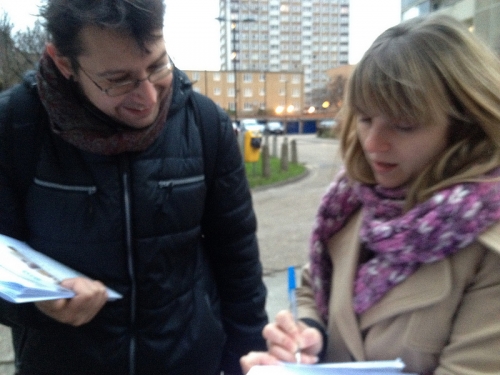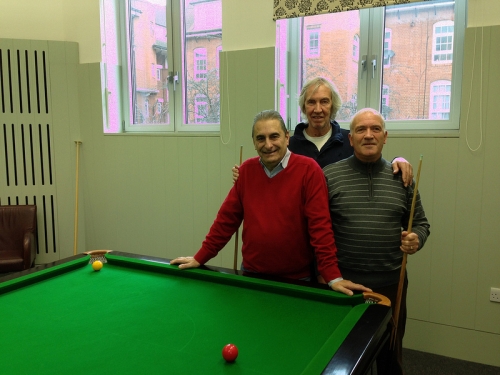Please note: this post is 155 months old and The Cares Family is no longer operational. This post is shared for information only

Two – maybe three – flimsy taps with the knocker. Then a pause, an experiment with the bell, and a brief consultation with the clipboard to check you’re at the right address. Then a final, token knock and – just as you’re about to turn away – a figure growing slowly larger behind frosted glass. The door creaks open.
I had been hired by North London Cares in January to carry out fieldwork for the Climate Resilience Islington South Project (CRISP). It was an ambitious scheme, in partnership with Islington Council, which sought to map the preparedness of older people for extreme – and in particular very hot – weather. Unlike freezing winters, the potential problems thrown up by summer – overheating, dehydration, exposure to the sun – are often overlooked. But they pose a significant risk for older residents, many of whom grew up before there was widespread awareness of the dangers. Our project aimed to understand how local people respond to very hot weather, but also to assess overall levels of social capital in the area, and to help establish contact with some of our most vulnerable neighbours.
My last experience of knocking on doors was very different – political canvassing for the Democrats in the suburbs of Virginia – so I was unsure what to expect from this project. And fieldwork was made more challenging by the fact that we were doing it during the coldest winter since 1963; the prospect of a heat wave was hard for some residents to take seriously or even imagine.

Despite this the project was a big success. We spoke to 466 older residents and presented our final outcomes to DEFRA, complete with policy suggestions. As the climate becomes more unpredictable over the next few years it will be increasingly important to protect older and more vulnerable people from hot weather. We hope that CRISP represents a significant first step towards doing that in Islington.
The fieldwork itself was fascinating. I don’t have grandparents so I didn’t have a great deal of experience interacting with older people before I knocked on my first door. Yet I was struck, from the outset, by the warmth of the people I spoke to. Most were much less suspicious than I’d feared, and were in almost all cases keen to help.
The demographic profile was one of the most immediately obvious points of interest. In Islington, a diverse borough which has become synonymous with urbane, cosmopolitan values, it was conspicuous how out of sync older council tenants felt. They tended to be white working class and socially conservative; they were mostly British, or from the earliest waves of migration (i.e. Irish and Italian). Many had lived in the borough their entire life, and had a sense of being ‘left behind’ by the gentrification process. In a rapidly evolving area, defined by its transient population and the explosion of digital and creative industries, there was a permanence about the residents I spoke to which was at once reassuring and sad. This was reflected in the way they answered questions: there was, in almost all cases, a craving for informality, localism and, by implication, a simpler way of life.

While a more remote research project might consider such a group quite homogenous in terms of backgrounds and attitudes, my abiding memory is of their individuality – an individuality which at times made our attempt to understand them collectively seem almost futile. A number of people stand out in my memory: a jolly 96 year old Irish man who took off his prosthetic leg and showed it to me; a man on the 17th floor feeding peanuts to a family of squirrels that lived on guttering outside his window; a couple, the man 82, the woman 64, who had eloped to the Caribbean while she was still in her twenties because her family disapproved of interracial marriage; a Czech lady who’d fled the Soviet Union during the 1960s; a very quiet man, whose wife had just died and who talked to me through the security gate on his door, holding onto the bars as we spoke; a woman who had watched the tower block she still lived in being built; a communist from the Isle of Skye with a shrine to Lenin in her living room; a Somali man who required breathing apparatus to speak; a man who told me he’d been a famous diamond thief in the 1970s. The stories ranged from the uplifting to the very sad, but in almost all cases you got a strong sense of an interesting individual, keen to express themselves and perhaps not listened to enough.
I finished the project better educated about climate impacts and the implications of social policy, and with a forensic knowledge of the cafes, bus stops and housing estates of Bunhill and Clerkenwell. But more important was the sense of potential the project gave me; of the stories and experiences just beneath the surface – within every individual and every community, including ours.
Chris Clarke